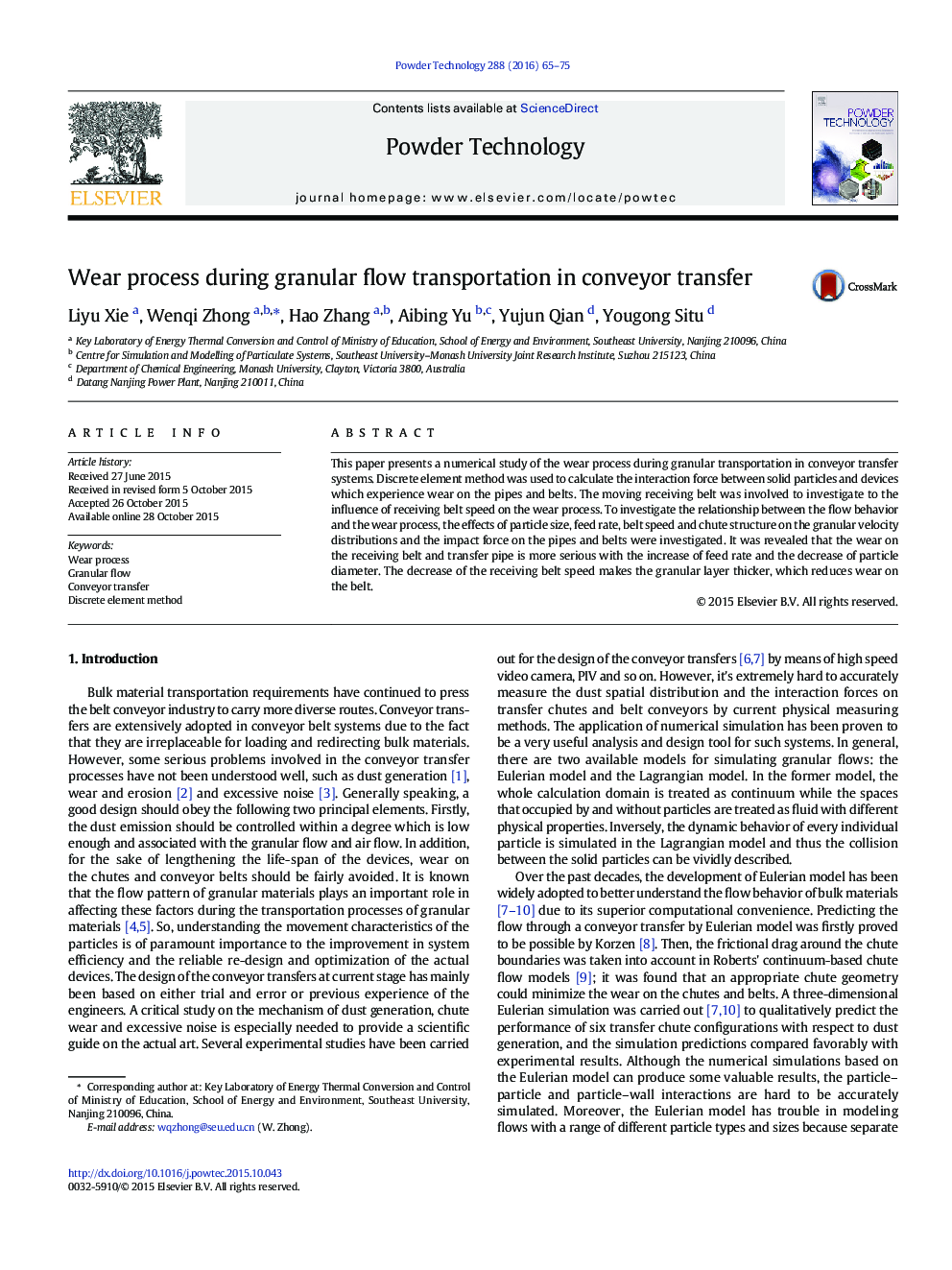| Article ID | Journal | Published Year | Pages | File Type |
|---|---|---|---|---|
| 235483 | Powder Technology | 2016 | 11 Pages |
•A 3-D DEM model was established to study wear on granular conveyor transfer.•The moving receiving belt is contained in complex transfer devices.•Pipes and belts are more likely to be worn with large particle size.•Wear on the receiving belt is more serious with decreasing receiving belt speed.
This paper presents a numerical study of the wear process during granular transportation in conveyor transfer systems. Discrete element method was used to calculate the interaction force between solid particles and devices which experience wear on the pipes and belts. The moving receiving belt was involved to investigate to the influence of receiving belt speed on the wear process. To investigate the relationship between the flow behavior and the wear process, the effects of particle size, feed rate, belt speed and chute structure on the granular velocity distributions and the impact force on the pipes and belts were investigated. It was revealed that the wear on the receiving belt and transfer pipe is more serious with the increase of feed rate and the decrease of particle diameter. The decrease of the receiving belt speed makes the granular layer thicker, which reduces wear on the belt.
Graphical abstractFigure optionsDownload full-size imageDownload as PowerPoint slide
